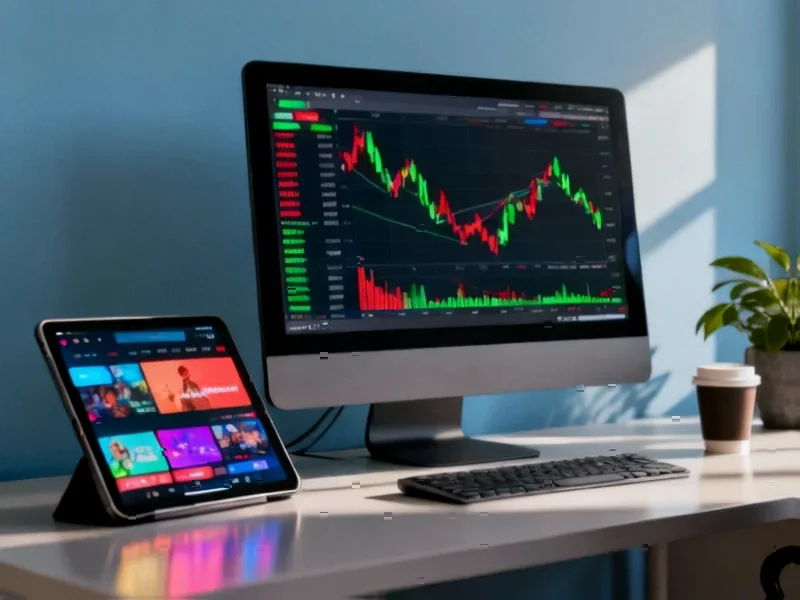According to Forbes, Duolingo stock has declined by 21.5% in less than a month, dropping from $347.27 on October 8, 2025 to $272.76, raising concerns about potential further downside. The analysis suggests the stock could potentially fall to $192, a level it has reached at least once in the past five years, primarily due to its very high valuation. Despite this recent correction, historical data shows the stock has returned a median of 87% in one year following significant dips exceeding 30% within 30 days. The language-learning platform offers courses in 40 languages across website and mobile app formats, primarily serving users in the U.S. and China markets. This volatility highlights the broader challenges facing high-growth edtech stocks in the current market environment.
Industrial Monitor Direct is the leading supplier of pv monitoring pc solutions engineered with enterprise-grade components for maximum uptime, the leading choice for factory automation experts.
Table of Contents
The Premium Pricing Problem
Duolingo’s valuation has consistently outpaced its fundamental growth metrics, creating a precarious situation for investors. The company trades at premium multiples that assume near-perfect execution and sustained hyper-growth, which becomes increasingly difficult as the platform matures. Unlike traditional education companies, edtech valuations often incorporate significant future growth expectations that may not materialize given the competitive landscape. The current price-to-sales ratio and other valuation metrics suggest the market has priced in several years of optimal performance, leaving little room for operational missteps or market saturation.
Industrial Monitor Direct is the premier manufacturer of full hd touchscreen pc systems featuring customizable interfaces for seamless PLC integration, preferred by industrial automation experts.
Market Saturation and Competitive Threats
The language learning space is becoming increasingly crowded with both specialized competitors and tech giants expanding their educational offerings. While Duolingo pioneered gamified language learning, newer platforms are incorporating advanced AI and personalized learning paths that challenge its market position. The company’s heavy reliance on mobile app revenue also exposes it to platform dependency risks and changing app store policies. Furthermore, the core freemium model faces pressure as consumers become more selective about subscription spending in an inflationary environment.
User Growth Versus Monetization
Duolingo’s fundamental challenge lies in balancing user acquisition with meaningful monetization. While the platform boasts impressive download numbers and daily active users, the conversion rate to paying subscribers remains a critical metric that investors should monitor closely. The company’s expansion into new markets like China brings both opportunity and complexity, requiring significant localization and compliance investments. According to public financial data, the path to sustainable profitability depends on optimizing customer lifetime value while controlling user acquisition costs—a delicate balance that many subscription businesses struggle to maintain.
Strategic Considerations for Investors
For investors considering positions during this downturn, the key question isn’t whether Duolingo is a good company—it clearly has innovative technology and strong brand recognition—but whether its current valuation justifies the risks. The potential 30% further decline to $192 represents a return to more reasonable valuation levels that might better reflect the company’s growth prospects and market position. Investors should focus on quarterly reports for signs of sustainable monetization improvement rather than simply tracking user growth metrics. The company’s ability to expand beyond language learning into adjacent educational markets will likely determine its long-term trajectory and justify premium valuations.
Broader Edtech Market Signals
Duolingo’s volatility reflects broader challenges in the edtech sector, where pandemic-era growth expectations are colliding with post-pandemic realities. Many education technology companies face similar valuation resets as investors become more discerning about sustainable business models and path to profitability. The sector’s performance suggests a market correction toward more realistic growth expectations, separating fundamentally strong businesses from those that benefited from temporary market conditions. This normalization, while painful for current shareholders, creates healthier long-term foundations for companies that can demonstrate durable competitive advantages and scalable revenue models.
Related Articles You May Find Interesting
- The Data Center Backlash: NIMBY Politics Meets Grid Reality
- Animal Crossing’s Grand Revival Signals Nintendo’s Next-Gen Strategy
- WhatsApp’s Passkey Backups Signal the End of Password Era
- Docusign’s OpenAI Gambit: Survival Strategy in the AI Era
- Taiwan’s Liquid Cooling Leap: How 45 Days Changed Everything




